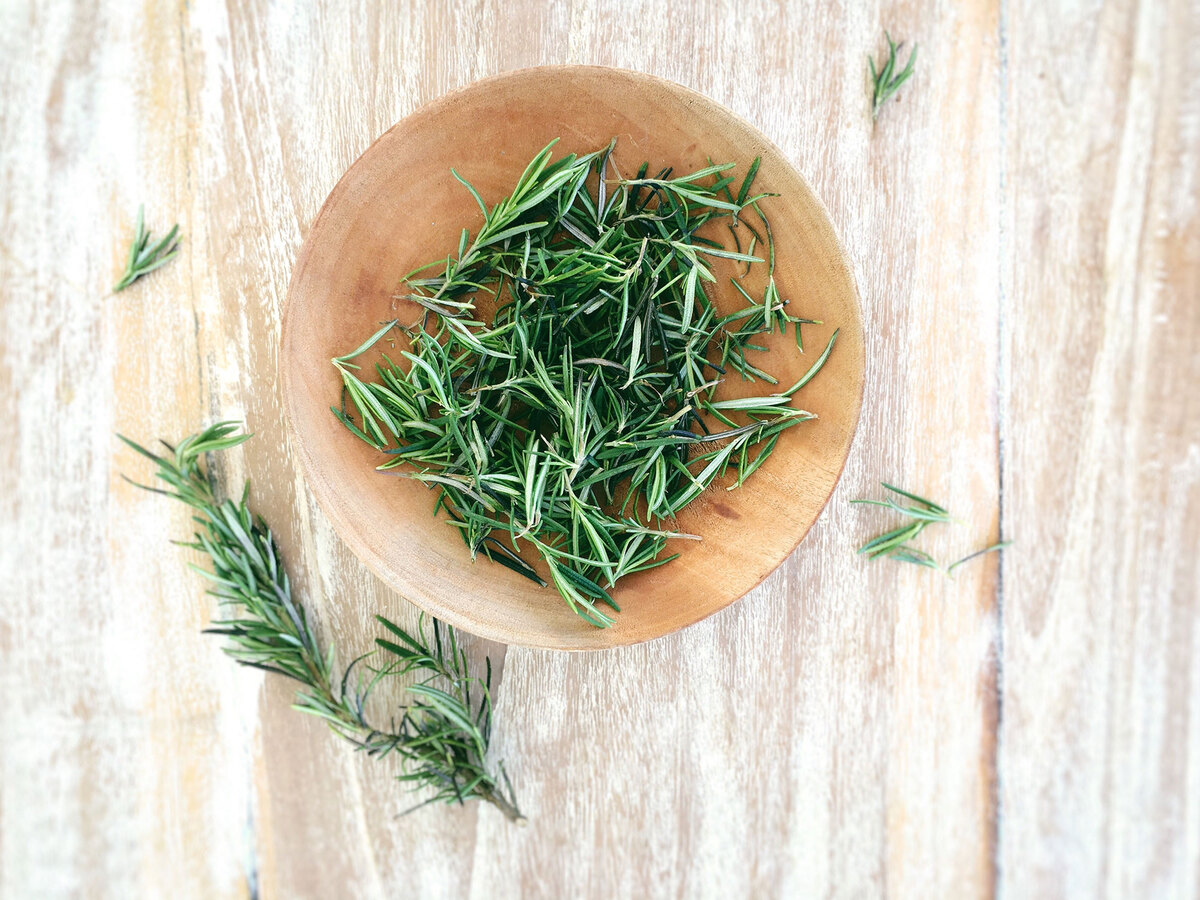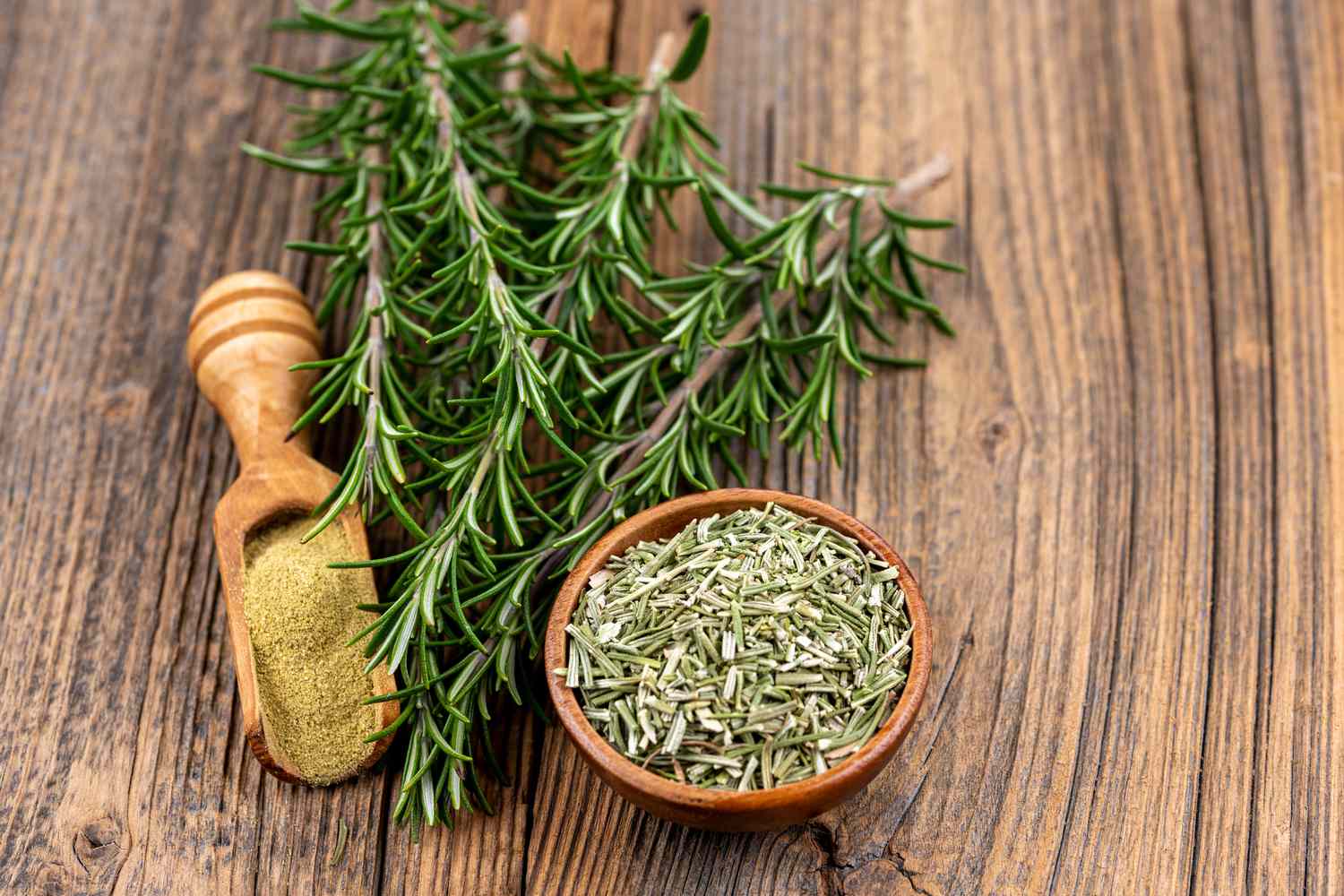Home>Gardening Techniques>DIY Projects>How To Use Rosemary In Soup


DIY Projects
How To Use Rosemary In Soup
Published: February 2, 2024
Learn how to incorporate rosemary into your favorite soups with these helpful DIY project tips and ideas. Enhance the flavors of your homemade soups with the aromatic and delicious herb.
(Many of the links in this article redirect to a specific reviewed product. Your purchase of these products through affiliate links helps to generate commission for Chicagolandgardening.com, at no extra cost. Learn more)
Table of Contents
Introduction
When it comes to creating delicious and flavorful soups, adding herbs and spices is a surefire way to elevate the taste profile. One such herb that can bring a burst of aroma and flavor to your soups is rosemary. Known for its distinctive pine-like fragrance and earthy taste, rosemary is a versatile herb that can enhance the flavor of various soup recipes.
In addition to its culinary benefits, rosemary also offers a range of health benefits. Packed with antioxidants and anti-inflammatory properties, the herb is known to boost the immune system, improve digestion, and even promote brain health. So, by incorporating rosemary into your soups, you’re not only making them more delicious but also adding a nutritious twist to your meals.
Whether you’re a seasoned chef or a beginner cook, this article will guide you on how to use rosemary to enhance your homemade soups. We’ll explore the benefits of using rosemary, how to select and prepare fresh rosemary, and the different ways to incorporate it into various types of soups. So, let’s get started and discover the wonderful world of rosemary-infused soups!
Benefits of Using Rosemary in Soup
Using rosemary in your soup recipes not only adds a delightful burst of flavor but also brings along several health benefits. Let’s take a closer look at the advantages of incorporating this aromatic herb into your soups:
- Rich in Antioxidants: Rosemary contains powerful antioxidants that help protect your cells from damage caused by harmful free radicals. These antioxidants can help boost your immune system and promote overall well-being.
- Anti-Inflammatory Properties: The anti-inflammatory compounds present in rosemary can help reduce inflammation in the body, making it beneficial for individuals with conditions such as arthritis or allergies.
- Improved Digestion: Rosemary has been traditionally used as a digestive aid. It can help stimulate digestion, relieve bloating, and soothe an upset stomach, making it an excellent addition to hearty and comforting soups.
- Mental Clarity and Focus: In addition to its culinary uses, rosemary has long been associated with improved brain function. Its aroma has been shown to enhance memory and concentration, making it an ideal herb to include in your cooking.
- Boosts Circulation: The active compounds in rosemary can help improve circulation by dilating blood vessels and increasing blood flow. This can contribute to better nutrient absorption and delivery throughout the body.
With all these amazing benefits, it’s clear that adding rosemary to your soup not only enhances the taste but also supports your health in more ways than one.
Selecting and Preparing Fresh Rosemary
When it comes to using fresh rosemary in your soup, selecting and preparing the herb properly is crucial to ensure optimal flavor and aroma. Here are some tips to help you choose and prepare fresh rosemary:
- Look for Freshness: When selecting rosemary, look for fresh, vibrant stems that are firm and green in color. Avoid any wilted or yellow leaves, as this indicates that the herb may have started to deteriorate.
- Smell the Aroma: Give the rosemary a gentle rub or crush a leaf between your fingers. The herb should have a strong, pleasant aroma. This indicates that the essential oils are intact and the rosemary is fresh.
- Trim the Stems: Before adding rosemary to your soup, remove the leaves from the woody stems. Hold the top end of the rosemary sprig and run your fingers down the stem in the opposite direction of growth. This will strip the leaves off easily.
- Chop or Leave Whole: Depending on your preference, you can either chop the rosemary leaves finely or leave them as whole sprigs. Chopping the leaves will release more flavor, while leaving them whole allows for easy removal before serving.
- Timing is Key: To infuse your soup with the maximum flavor of rosemary, add it during the cooking process rather than at the beginning. This will prevent the herb from losing its aroma and taste during prolonged cooking.
- Balance the Quantity: Rosemary has a strong flavor, so it’s important to use it judiciously to avoid overpowering the other flavors in your soup. Start with a small amount and taste as you go, adding more if desired.
By selecting fresh rosemary and preparing it properly, you can ensure that your soups are infused with the delightful aroma and flavor of this versatile herb.
Using Dried Rosemary in Soup
If you don’t have access to fresh rosemary or prefer the convenience of dried herbs, don’t worry! Dried rosemary can also be a great option for adding flavor to your soups. Here are some tips on using dried rosemary in your soup recipes:
- Adjust the Quantity: When substituting dried rosemary for fresh, keep in mind that dried herbs are more concentrated in flavor. As a general rule, use approximately one-third of the amount of dried rosemary compared to fresh. For example, if a recipe calls for 1 tablespoon of fresh rosemary, use 1 teaspoon of dried rosemary instead.
- Crush the Leaves: Before adding dried rosemary to your soup, crush the leaves between your fingers or use a mortar and pestle to release the flavors. This will help revive the essential oils and maximize the herb’s flavor.
- Add Early in Cooking: Unlike fresh rosemary, dried rosemary can withstand longer cooking times without losing its flavor. Therefore, it is best to add dried rosemary to your soup at the beginning of the cooking process, allowing it to infuse the flavors throughout.
- Consider Whole Sprigs: Instead of using crushed dried rosemary, you can also opt for whole sprigs. Simply add the dried rosemary sprigs to your soup and remove them before serving. This method allows for subtle infusion of flavor while keeping the texture of the soup smooth.
- Crush Before Storage: If you have dried rosemary sprigs or leaves that you plan to store for future use, it’s a good idea to crush them slightly before storing. This will help release some of the essential oils and maintain the potency of the herb.
Using dried rosemary in your soup recipes can be a convenient and tasty alternative to fresh rosemary. Just remember to adjust the quantity and crush the leaves for optimal flavor infusion.
Adding Rosemary to Different Types of Soup
Rosemary can be a versatile herb to use in various types of soups, enhancing their flavors in unique ways. Here are some ideas for incorporating rosemary into different types of soup recipes:
- Vegetable Soup: Add a sprig of rosemary to your vegetable soup during the cooking process to infuse it with a subtle earthy flavor. The rosemary pairs well with a variety of vegetables such as carrots, potatoes, and tomatoes.
- Roasted Tomato Soup: When making a rich and creamy roasted tomato soup, consider adding a pinch of dried or freshly chopped rosemary. This herb complements the sweetness of the tomatoes and adds a hint of complexity to the overall taste.
- Chicken Noodle Soup: For a comforting bowl of chicken noodle soup, add a few sprigs of fresh rosemary to the broth while simmering. The rosemary will add a fragrant note to the soup and enhance the overall savory flavor.
- Bean Soup: Beans and rosemary make a fantastic combination. Whether you’re making a hearty white bean soup or a flavorful lentil soup, adding rosemary will impart a wonderful depth of flavor to the dish.
- Butternut Squash Soup: To elevate the taste of creamy butternut squash soup, sprinkle some dried or freshly chopped rosemary into the pot. The herb adds an earthy and herbaceous note that complements the sweetness of the squash perfectly.
- Potato Soup: Rosemary and potatoes are a classic pairing. For a flavorful and hearty potato soup, chop some fresh rosemary leaves and add them to the pot. The combination will create a comforting and aromatic dish.
These are just a few examples of how you can incorporate rosemary into different types of soup. Don’t be afraid to experiment and explore other soup recipes where rosemary can be a delightful addition.
Tips for Enhancing the Flavor of Soup with Rosemary
Using rosemary in your soup can add a delightful and aromatic flavor, but there are a few additional tips you can follow to enhance the taste even further. Here are some suggestions to make the most out of the rosemary in your soup:
- Infuse the Broth: To extract the maximum flavor from rosemary, infuse it in the broth before adding other ingredients. Simmer the rosemary sprigs in the broth for a few minutes to allow the flavors to meld together.
- Use Freshly Crushed Rosemary: Crush the leaves of fresh rosemary just before adding them to the soup. This releases the essential oils and intensifies the flavor of the herb.
- Pair with Complementary Ingredients: Consider the flavors of the other ingredients in your soup and choose complementary flavors to pair alongside rosemary. Ingredients such as garlic, thyme, and lemon can enhance the taste when combined with rosemary.
- Balance the Intensity: Rosemary has a strong flavor, so it’s important to find the right balance in your soup. Start with a smaller amount, and gradually add more to suit your taste preferences.
- Remove the Sprigs: If you added whole rosemary sprigs to your soup for infusion, remember to remove them before serving. Leaving the sprigs in the soup can result in an overpowering flavor and an unpleasant texture.
- Add Rosemary at the Right Time: Consider the cooking time for your soup and add rosemary accordingly. For longer-cooking soups, add rosemary at the beginning, while for quick-cooking soups, add it towards the end to preserve its aroma and flavor.
- Garnish with Rosemary: For an elegant presentation, reserve a few fresh rosemary leaves to use as a garnish. This adds a touch of freshness and visual appeal to your soup when serving.
By following these tips, you can ensure that the flavor of rosemary shines through in your soup, creating a truly delicious and aromatic dish.
Serving and Storing Soup with Rosemary
Once you have created a delicious soup infused with rosemary, it’s important to serve and store it properly to maintain its freshness and flavor. Here are some tips for serving and storing soup with rosemary:
- Serving: When serving soup with rosemary, it’s best to remove any remaining rosemary sprigs or leaves before ladling the soup into bowls. This ensures a smooth texture and prevents any overpowering flavors.
- Garnish: If desired, you can sprinkle some freshly chopped rosemary on top of each serving as a garnish. This not only adds visual appeal but also enhances the aroma and flavor of the soup.
- Storage: If you have leftovers, allow the soup to cool completely before storing. Transfer it to an airtight container and refrigerate it promptly. Cooked soup with rosemary can typically be stored in the refrigerator for up to 3-4 days.
- Reheating: When reheating the soup, do so gently to prevent the flavors from deteriorating. Heat the soup on low to medium heat on the stovetop or using the microwave. Stir occasionally to ensure even heating.
- Freezing: If you want to store soup for a longer period, consider freezing it. Remove the rosemary sprigs before freezing as they can become limp and lose flavor. Frozen soup with rosemary can be stored for up to 3 months.
- Thawing and Reheating from Frozen: To thaw frozen soup, transfer it to the refrigerator overnight. Once fully thawed, you can reheat it using the same gentle methods mentioned above. Avoid reheating frozen soup in the microwave directly to ensure even heating.
- Flavor Intensification: It’s worth noting that flavors can intensify over time, especially with the addition of rosemary. If you find that the rosemary flavor is overpowering when reheating leftovers, you can balance it out by adding more broth or other ingredients to dilute the flavor.
By following these serving and storage tips, you can enjoy your delicious rosemary-infused soup for days to come while maintaining its taste and quality.
Conclusion
Rosemary is a versatile herb that can elevate the flavor profile of your soups while also offering numerous health benefits. Whether you use fresh rosemary or dried rosemary, the herb brings a delightful aroma and a unique earthy taste to your soups.
Incorporating rosemary into your soup not only enhances the overall flavor but also adds a touch of elegance to your dishes. From vegetable soups to creamy tomato bisques, the addition of rosemary can take your soups to the next level.
When using rosemary in soup recipes, it’s important to select fresh rosemary or properly prepare dried rosemary to ensure optimal flavor. Experiment with different types of soups and find the perfect balance of rosemary and other complementary ingredients to suit your palate.
Remember to remove rosemary sprigs before serving and garnish with fresh rosemary leaves for a visually appealing presentation. When it comes to storing leftover soup, refrigerate it promptly or freeze it for future enjoyment.
Discover the wonderful world of rosemary-infused soups and elevate your homemade soup recipes to new heights. Whether you’re looking for a comforting bowl of chicken noodle soup or a hearty bean soup, rosemary can be your secret ingredient to create flavorful and satisfying dishes.
So go ahead, grab a pot, and let the aroma of rosemary fill your kitchen. Get creative with your soup recipes, and enjoy the delightful flavors that rosemary brings to your homemade soups.






